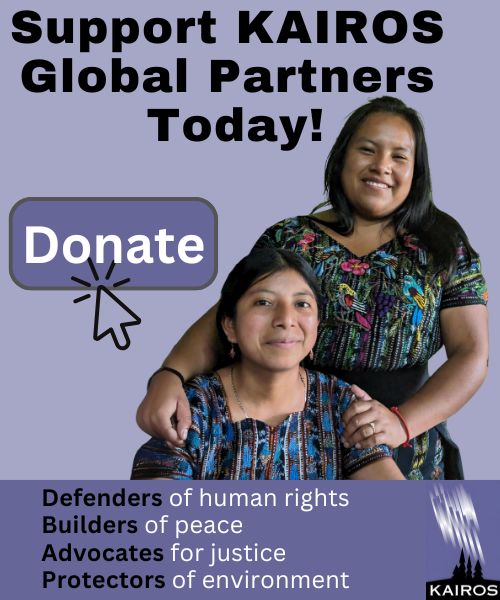World Peoples’ Summit On Climate Change And The Rights Of Mother Earth
Summary of the Final Declaration
From April 19-22, 2010 forty thousand people – NGOs, Indigenous Peoples, political leaders, and citizens from every continent – met together in various working groups to come up with real solutions to climate change. The President of Bolivia, Evo Morales, called the conference in response to the failure of United Nations Copenhagen conference on climate change. Cochabamba became a democratic space to counter the undemocratic process that resulted in the controversial Copenhagen Accord negotiated behind closed doors by only a handful of countries. Attendees participated in sixteen official working groups, many self-organized discussion groups, and a number of workshops which all contributed to the final outcome of the summit. The final declaration, the Peoples’ Agreement, encompasses the results from these three days of consultations.
There are five central issues addressed in the Peoples’ Agreement: a frank discussion of the causes of climate change, proposals for solutions centered on local economies of scale, a condemnation of market mechanisms as a false solution to climate change, a recommendation for the universal recognition of the Rights of Mother Earth, and calls for the establishment of an International Tribunal of Conscience.
The Peoples’ Agreement criticizes the capitalist system’s logic of competition and unlimited growth as the fundamental driver of climate change: “Under capitalism, Mother Earth is converted into a source of raw materials, and human beings into consumers and a means of production, into people that are seen as valuable only for what they own, and not for what they are.” Therefore it calls for a new system to be constructed, one that will “restore harmony with nature and among human beings.” The globalization of the capitalist system, especially since the industrial revolution, is responsible for the exploitation of both the lands and the peoples of the developing world.
This long-term exploitation means that the developed world has accumulated an ecological debt owed to the developing world. The document calls for the recognition and repayment of this debt on the part of the developed countries. Repayment will mean that the industrialized world has to restore the atmospheric space through the “reduction and absorption of their emissions” as well as assume “the costs and technology transfer needs of developing countries arising from the loss of development opportunities due to living in a restricted atmospheric space.” It also means that they must take responsibility for the millions of people that will be forced from their homelands as climate change refugees by offering them sanctuary and a guarantee of their human rights in adopted homelands. Further, it articulates the necessity of constructing an Adaptation Fund for climate change that is managed in a “sovereign, transparent and equitable manner for all States.”
The statement acknowledges that solutions to climate change will involve a “profound shift in agricultural practices towards a sustainable model of production” and a respect for the “right of peoples to control their own seeds, lands, water, and food production, thereby guaranteeing through forms of production that are in harmony with Mother Earth and appropriate to local cultural contexts…[a] deepening [of] the autonomous (participatory, communal and shared) production of every nation and people.” The document goes on to reject Free Trade Agreements that apply Intellectual Property Rights to life and promote technologies such as agrochemicals and genetically modified organisms. It also rejects false solutions such as agrofuels, geo-engineering, nanotechnology, etc that only exacerbate the current crisis.”
The Peoples’ Agreement reflects on how the issue of international funding for climate adaptation and mitigation has been eclipsed by the promotion of market solutions, which it strongly condemns as having “become a lucrative business, commodifying our Mother Earth.” It goes on to say that it would be totally unacceptable to leave the fate of the earth in the hands of markets that demonstratively failed in the case of the recent financial crisis just as existing carbon market mechanisms have failed to reduce greenhouse gases.
The Agreement proposes recognition of the Rights of Mother Earth respecting the following principles:
- The right to live and to exist
- The right to be respected
- The right to regenerate its bio-capacity and to continue it’s vital cycles and processes free of human alteration
- The right of all species to maintain their identity and integrity as differentiated beings, self-regulated and interrelated
- The right to water as the source of life
- The right to clean air
- The right to comprehensive health
- The right to be free of contamination and pollution, free of toxic and radioactive waste
- The right to be free of alterations or modifications of it’s genetic structure in a manner that threatens it’s integrity or vital and healthy functioning
- The right to prompt and full restoration for violations to the rights acknowledged in the Declaration caused by human activities.
To fill the void of legal instruments to combat and guard against climate and environmental violations and to ensure the rights of climate refugees, the document demands the creation of an” International Climate and Environmental Justice tribunal that has the legal capacity to prevent, judge and penalize States, industries and people that by commission or omission contaminate and provoke climate change.” The Agreement ends with a call for the building up of a global Peoples’ Movement for Mother Earth grounded in democratic principles of complementarity and respect and a proposal for a global referendum on climate change with an appropriate level of preparation that will constitute a “broad and democratic space for coordination and joint worldwide actions.” To access the full document go to: http://pwccc.wordpress.com For more information on the summit contact dmcdougall@kairoscanada.org.








